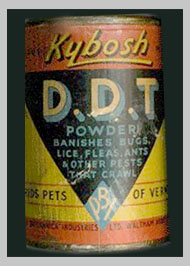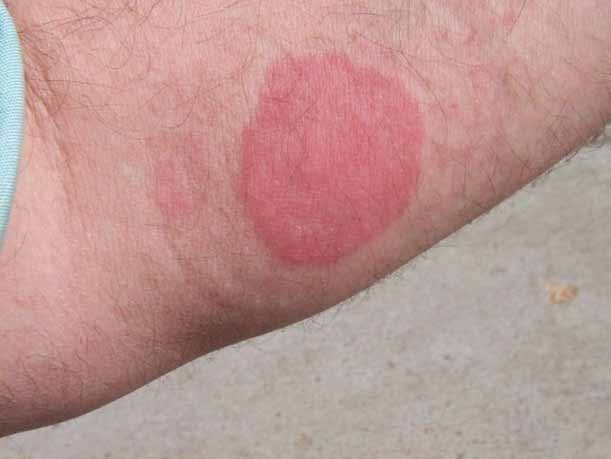Categories
- Bed Bug
- Bed Bug Cream
- BED BUG DATABASE
- Bed Bug Home Remedies
- Bed Bug Oil
- Bed Bug Remedies
- Bed Bug Spray
- Bed Bugs New York
- Bed Bugs Vancouver
- Bed Bugs World
- Bed Bugs American Samoa
- Bed Bugs Canada
- Bed Bugs Guam
- Bed Bugs North Mariana islands
- Bed Bugs Puerto Rico
- Bed Bugs United States
- Bed Bugs Alabama
- Bed Bugs Alaska
- Bed Bugs Arizona
- Bed Bugs Arkansas
- Bed Bugs California
- Bed Bugs Colorado
- Bed Bugs Connecticut
- Bed Bugs Delaware
- Bed Bugs Florida
- Bed Bugs Georgia
- Bed Bugs Hawaii
- Bed Bugs Idaho
- Bed Bugs Illinois
- Bed Bugs Indiana
- Bed Bugs Iowa
- Bed Bugs Kansas
- Bed Bugs Kentucky
- Bed Bugs Louisiana
- Bed Bugs Maine
- Bed Bugs Maryland
- Bed Bugs Massachusetts
- Bed Bugs Michigan
- Bed Bugs Minnesota
- Bed Bugs Mississippi
- Bed Bugs Missouri
- Bed Bugs Montana
- Bed Bugs Nebraska
- Bed Bugs Nevada
- Bed Bugs New Hampshire
- Bed Bugs New Jersey
- Bed Bugs New Mexico
- Bed Bugs New York
- Bed Bugs North Carolina
- Bed Bugs North Dakota
- Bed Bugs Ohio
- Bed Bugs Oklahoma
- Bed Bugs Oregon
- Bed Bugs Pennsylvania
- Bed Bugs Rhode Island
- Bed Bugs South Carolina
- Bed Bugs South Dakota
- Bed Bugs Tennessee
- Bed Bugs Texas
- Bed Bugs Utah
- Bed Bugs Vermont
- Bed Bugs Virgin Islands
- Bed Bugs Virginia
- Bed Bugs Washington
- Bed Bugs Washington DC
- Bed Bugs West Virginia
- Bed Bugs Wisconsin
- Bed Bugs Wyoming
- BedBug Removal
- BedBugs in Michigan
- Canada Bed Bugs
- Do it yourself Bed Bug
- Exterminator Bed Bugs
- Health
- Pest Inspection
- Toronto Bed Bugs
- Welcome to Bed Bugs
Registry Sites List
- Bronx Bed Bug Registry Infestation Maps, Residential And Hotel
- Brooklyn Bed Bug Registry Infestation Maps, Residential And Hotel
- Manhattan Bed Bug Registry Infestation Maps, Residential And Hotel
- Nyc Bed Bug Registry Infestation Maps, Residential And Hotel
- Queens Bed Bug Registry Infestation Maps, Residential And Hotel
- Staten Island Bed Bug Registry Infestation Maps, Residential And Hotel
Recommended Sites
Daily Archives: October 5, 2022
News Links:
DDT for Bed Bugs
DDT for Bed Bugs
This is an ancient insect whose roots are thought to go back to the times of cave dwellers. For many years, bed bugs were found in numerous communities around the US. As late as the 1950's, bed bugs were a considerable problem. After the discovery of DDT and its application here, the incidence of bed bug infestations declined.
 If you read the bed bug blogs you will find lots of angry vilification of Rachel Carson, who wrote the book 'Silent Spring', which then led to the banning of DDT, for the theory is that because DDT was banned, now we have bed bugs, a theory which makes no sense whatsoever since DDT was banned half a century ago, and we are only experiencing a plague of bed bugs in the last couple of years. People are also unaware that bed bugs became resistant to DDT back in the 1940s, which is one of the reasons why the pest control industry turned away from DDT and began using alternative chemicals in the last part of the century. DDT is constantly being promoted as the bed bug panacea, but the truth of the matter is that bed bugs are amazing creatures showing an ability to adapt to any form of pesticide, and that includes DDT, which bed bugs long ago defeated in the 1940s, and which they will defeat again should DDT be brought back onto the market because now we have bed bugs.
If you read the bed bug blogs you will find lots of angry vilification of Rachel Carson, who wrote the book 'Silent Spring', which then led to the banning of DDT, for the theory is that because DDT was banned, now we have bed bugs, a theory which makes no sense whatsoever since DDT was banned half a century ago, and we are only experiencing a plague of bed bugs in the last couple of years. People are also unaware that bed bugs became resistant to DDT back in the 1940s, which is one of the reasons why the pest control industry turned away from DDT and began using alternative chemicals in the last part of the century. DDT is constantly being promoted as the bed bug panacea, but the truth of the matter is that bed bugs are amazing creatures showing an ability to adapt to any form of pesticide, and that includes DDT, which bed bugs long ago defeated in the 1940s, and which they will defeat again should DDT be brought back onto the market because now we have bed bugs.
 Bed bugs probably continue to carry with them the genes for DDT resistance, since such resistant strains existed earlier in the previous century. Hotels, including four and five star hotels which target the market for international travelers, are one of the hot spots for bed bug infestations. This has led some to speculate upon what possible connection might exist between international travel and the bed bug epidemic. It is worth remembering here that DDT has not been banned in every country for the last half century, and so therefore we must assume that the DDT bed bug exists in the countries which have continued to use DDT throughout the last half century, and that bed bugs resistant to such strong pesticides have infested hotels and in the great mixing bowl bed bugs have been trading genes for resistance to a wide variety of pesticides, including resistance to DDT. So therefore we must assume that the DDT resistant bed bug already exists, both those strains which continue to carry the previous resistance to DDT built up in the 1940s and those strains which have imported such resistance and can now no doubt be found in four and five star hotels, New York lofts, penthouses, and Manhattan office towers.
Bed bugs probably continue to carry with them the genes for DDT resistance, since such resistant strains existed earlier in the previous century. Hotels, including four and five star hotels which target the market for international travelers, are one of the hot spots for bed bug infestations. This has led some to speculate upon what possible connection might exist between international travel and the bed bug epidemic. It is worth remembering here that DDT has not been banned in every country for the last half century, and so therefore we must assume that the DDT bed bug exists in the countries which have continued to use DDT throughout the last half century, and that bed bugs resistant to such strong pesticides have infested hotels and in the great mixing bowl bed bugs have been trading genes for resistance to a wide variety of pesticides, including resistance to DDT. So therefore we must assume that the DDT resistant bed bug already exists, both those strains which continue to carry the previous resistance to DDT built up in the 1940s and those strains which have imported such resistance and can now no doubt be found in four and five star hotels, New York lofts, penthouses, and Manhattan office towers.
We don't think DDT is a solution for bed bugs now.Sure '” despite being ecologically-minded and kind of nervous around pesticides in general '” like many of you, my first reaction to bed bugs was 'œBring back DDT!' However, learning more made me realize this was not practical, and not even an effective solution anymore. I don't want to entertain a discussion of this. The fact is, bed bugs started showing resistance to DDT as early as 1948 in Hawaii, and reports from the 1950s and 1960s, as well more recently, tell us that bed bugs were not killed when spraying with DDT was done for malarial mosquitos.
 In 1969, the US Department of Agriculture (USDA) cancelled the registration of certain uses of DDT (on shade trees, on tobacco, in the home, and in aquatic environments) after studying the persistence of DDT residues in the environment. Applications on crops, commercial plants, wood products, and for building purposes were cancelled by the USDA in 1970. Under the authority of the EPA, the registrations of the remaining DDT products and DDT-metabolites were cancelled on 4 January 1973,with the following exemptions: public health use for control of vector-borne diseases, USDA or military use for health quarantine, and use in prescription drugs for controlling body lice. All of these remaining uses were voluntarily cancelled (due to failure to pay maintenance fees) by October 1989.
In 1969, the US Department of Agriculture (USDA) cancelled the registration of certain uses of DDT (on shade trees, on tobacco, in the home, and in aquatic environments) after studying the persistence of DDT residues in the environment. Applications on crops, commercial plants, wood products, and for building purposes were cancelled by the USDA in 1970. Under the authority of the EPA, the registrations of the remaining DDT products and DDT-metabolites were cancelled on 4 January 1973,with the following exemptions: public health use for control of vector-borne diseases, USDA or military use for health quarantine, and use in prescription drugs for controlling body lice. All of these remaining uses were voluntarily cancelled (due to failure to pay maintenance fees) by October 1989.
Posted in BED BUG DATABASE
Comments Off on DDT for Bed Bugs

 Residence
Residence  Location
Location 










